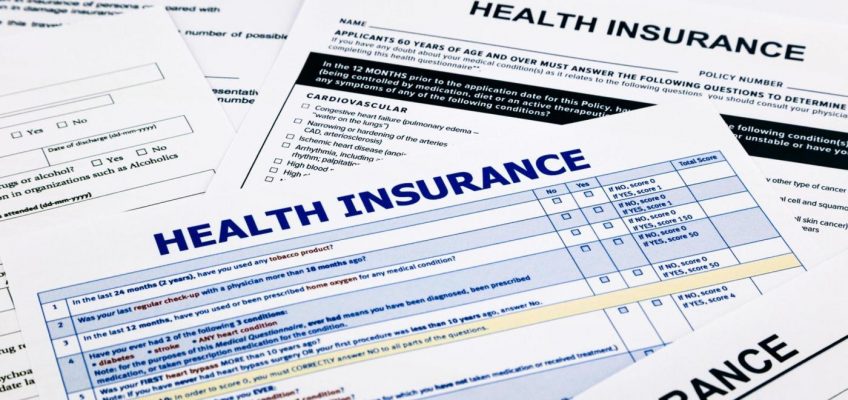By Lauren Sausser, KFF Health News
When Sally Nix found out that her health insurance company wouldn’t pay for an expensive, doctor-recommended treatment to ease her neurological pain, she prepared for battle.
Related Articles
RFK Jr.’s vaccine panel expected to recommend delaying hepatitis B shot for children
FDA takes aim at Hims & Hers, weight loss drugs in new advertising blitz
Here’s what dermatologists are saying about your skin care routine: Keep it simple
Kennedy’s vaccine committee plans to vote on COVID-19, hepatitis B and chickenpox shots
Youth mental health challenges keep mounting 2 years after Maui wildfires
It took years, a chain of conflicting decisions, and a health insurer switch before she finally won approval. She started treatment in January and now channels time and energy into helping other patients fight denials.
“One of the things I tell people when they come to me is: ‘Don’t panic. This isn’t a final no,’” said Nix, 55, of Statesville, North Carolina.
To control costs, nearly all health insurers use a system called prior authorization, which requires patients or their providers to seek approval before they can get certain procedures, tests, and prescriptions.
Denials can be appealed, but nearly half of insured adults who received a prior authorization denial in the past two years reported the appeals process was either somewhat or very difficult, according to a July poll published by KFF, a health information nonprofit that includes KFF Health News.
“It’s overwhelming by design,” because insurers know confusion and fatigue cause people to give up, Nix said. “That’s exactly what they want you to do.”
The good news is you don’t have to be an insurance expert to get results, she said. “You just need to know how to push back.”
Here are tips to consider when faced with a prior authorization denial:
1. Know your insurance plan.
Do you have insurance through your job? A plan purchased through healthcare.gov? Medicare? Medicare Advantage? Medicaid?
These distinctions can be confusing, but they matter a great deal. Different categories of health insurance are governed by different agencies and are therefore subject to different prior authorization rules.
For example, federal marketplace plans, as well as Medicare and Medicare Advantage plans, are regulated by the U.S. Department of Health and Human Services. Employer-sponsored plans are regulated by the Department of Labor. Medicaid plans, administered by state agencies, are subject to both state and federal rules.
Learn the language specific to your policy. Health insurance companies do not apply prior authorization requirements uniformly across all plans. Read your policy closely to make sure your insurer is following its own rules, as well as regulations set by the state and federal government.
2. Work with your provider to appeal.
Kathleen Lavanchy, who retired in 2024 from a job at an inpatient rehabilitation hospital in the Philadelphia area, spent much of her career communicating with health insurance companies on behalf of patients.
Before you contact your health insurer, call your provider, Lavanchy said, and ask to speak to a medical care manager or someone in the office who handles prior authorization appeals.
The good news is that your doctor’s office may already be working on an appeal.
Medical staffers can act as “your voice,” Nix said. “They know all the language.”
You or your provider can request a “peer-to-peer” review during the appeals process, which allows your doctor to discuss your case over the phone with a medical professional who works for the insurance company.
3. Be organized.
Many hospitals and doctors use a system called MyChart to organize medical records, test results, and communications so that they are easily accessible. Similarly, patients should keep track of all materials related to an insurance appeal — records of phone calls, emails, snail mail, and in-app messages.
Everything should be organized, either digitally or on paper, so that it can be easily referenced, Nix said. At one point, she said, her own records proved that her insurance company had given conflicting information. The records were “the thing that saved me,” she said.
“Keep an amazing paper trail,” she said. “Every call, every letter, every name.”
Linda Jorgensen, executive director of the Special Needs Resource Project, a nonprofit offering online resources for patients with disabilities and their families, has advised patients who are fighting a denial to specifically keep paper copies of everything.
“If it isn’t on paper, it didn’t happen,” she said.
Jorgensen, who serves as a caregiver to an adult daughter with special needs, created a free form you can print to help guide you when taking notes during phone calls with your insurance company. She advised asking the insurance representative for a “ticket number” and their name before proceeding with the conversation.
4. Appeal as soon as possible.
The silver lining is that most denials, if appealed, are overturned.
Medicare Advantage data published by KFF in January found that nearly 82% of prior authorization denials from 2019 through 2023 were partially or fully overturned upon appeal.
But the clock is ticking. Most health plans give you only six months to appeal the decision, according to rules laid out in the Affordable Care Act.
“Don’t dillydally,” Jorgensen advised, especially if you’re sending a paper appeal, or any supporting documents, through the U.S. Postal Service. She recommends filing quickly, and at least four weeks before the deadline.
For the sake of speed, some people are turning to artificial intelligence for help crafting customizable appeal letters.
5. Ask your HR department for help.
If you get your health insurance through an employer, there’s a good chance your health plan is “self-funded” or “self-insured.” That means your employer contracts with a health insurance company to administer benefits, but your employer shoulders the cost of your care.
Why does that matter? Under self-funded plans, decisions about what is or isn’t covered ultimately rest with your employer.
Let’s say, for example, your doctor has recommended that you undergo surgery, and your insurer has denied prior authorization for it, deeming the procedure “not medically necessary,” a phrase commonly used. If your plan is self-funded, you can appeal to the human resources department at your job, because your employer is on the hook for your health care costs — not the insurer.
Of course, there’s no guarantee your employer will agree to pay. But, at the very least, it’s worth reaching out for help.
6. Find an advocate.
Many states operate free consumer assistance programs, available by phone or email, which can help you file an appeal. They can explain your benefits and may intervene if your insurance company isn’t complying with requirements.
Beyond that, some nonprofit advocacy groups, such as the Patient Advocate Foundation, might help. On the foundation’s website is guidance about what to include in an appeal letter. For those battling severe disease, foundation staffers can work with you one-on-one to fight a denial.
7. Make noise.
We’ve written about this before. Sometimes, when patients and doctors shame insurers online, denials get overturned.
The same holds when patients contact lawmakers. State laws regulate some categories of health insurance, and when it comes to setting policy, state lawmakers have the power to hold insurance companies accountable.
Reaching out to your legislator isn’t guaranteed to work, but it might be worth a shot.
©2025 KFF Health News. Distributed by Tribune Content Agency, LLC.




